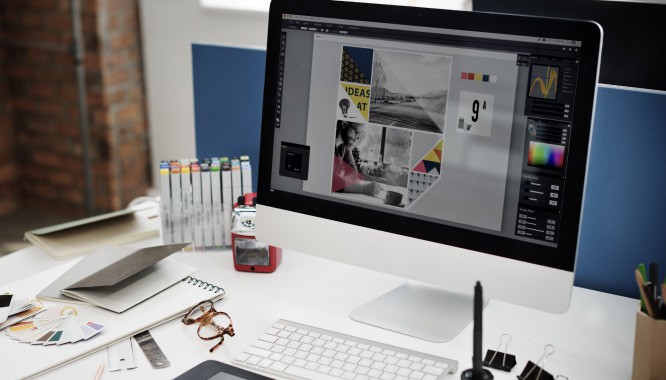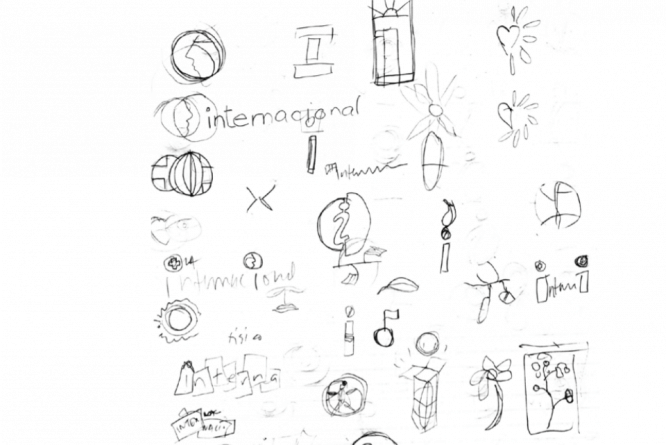4 tips for a designer: how to find your dream job
4 tips for a designer: how to find your dream job
Sasha Tikhonov, art director and co-founder of the Flyphant studio, wrote an article with four tips for all designers to help them work where they like, and not where a designer is needed “for show”.
Tips to help a designer get to the employer who wants you, not a closed position.
I have worked for several companies, had many interviews, and even more interviewed myself. Various applicants met:
1. looking for a bigger salary;
2. there is no common language with colleagues;
3. do not like projects;
4. clients do not like;
5. just walks around and studies who works how;
6. urgently need money.
I want to help first of all those who refer to points 2, 3 and 4. Look not only for you, but also for you. Regardless of the professional level, the right colleagues, projects and clients are waiting for you somewhere.
What need to do.

Step 1: talk to your boss
Step for designers from points 1 and 3.
Make sure you need to change jobs. It happens that employers make concessions easily so that you stay. If you get the job done, it’s easier to leave you than to find another designer. If you need a higher salary and are looking for a job because of this, then talk to your boss. The salary can be increased.
If you change jobs due to the fact that you are not interested in doing current tasks, then this can also be fixed. Talk to the same boss. Perhaps he has no idea that you don’t like drawing icons and want to spend most of your time designing interfaces.
If you are determined to change your job, then warn your employer about it. They will only be grateful to you, make life easier. They can and help in the search.
Step 2: prepare your portfolio
The portfolio must be kept up to date constantly, and not prepared before looking for a job. Constantly updated portfolios are monitored. They can also invite them to work.
Do not submit your portfolio in PDF, Dropbox, or other non-public form. It smells bad. If your portfolio is not public, then there is a risk that the work is not yours. And usually, such portfolios do not contain anything about projects, except images. Therefore, the employer does not even want to click on these links. Sign up on Behance, Revision, MaterialUp, Dribbble (although you still have to manage to get an invitation for the latter) or any other similar popular service and start adding projects. These services are convenient for viewing your portfolio and information about you.
There are cases when works are under NDA. This means that these works should not be shown to anyone, even via a link with a password. If this is your case, then write about it next to the link to the work (yes, all the same, everyone sends and shows such works). But in my memory, such an explanation was added 3-4 times (extremely rarely).
Do not remove old projects from your portfolio as they help you understand how you have grown over time.
In your portfolio, try not only to show pictures, but also to talk about projects and your role. You may have been a technical designer, designer, or art director. This is important for anyone looking for a designer.
A well-crafted portfolio will tell you not only how good you are with Photoshop or Sketch, but also a little about your storytelling abilities.
Step 3: write a letter
When responding to a vacancy, write more than three words. “Here’s my portfolio” and the link to it — it doesn’t give a damn.
Tell us what city you are from and what you would like to do. The same interface designer is a wide range of work. It includes design (interface structure, page schemes, prototype based on them), and design (design concept, rendering of interface elements, page design as a whole, creating a UI Kit, etc.), and animation (what, where and at what speed should move, appear, disappear).
Tell us why you are changing your job or why you left the last one. And do not hesitate to talk about your wishes for a salary if the vacancy does not say anything about it. Most employers have a predetermined budget for a vacancy, so your wish can immediately cut off all unnecessary communication.
No matter how trite it may be, write without mistakes. Neglecting grammar and punctuation will greatly understate your opinion. Half of all resumes sent to us contain gross errors. Reading is disgusting.
If you send your resume to several companies at once (make a mailing list), then do not be too lazy to remember which vacancy in each of the companies you are sending it to. Recently, after the correspondence about the job, the designer asked: “Can you remind me of the vacancy details? After such a question, you may not only not receive an answer, but also receive negative feedback from other companies (yes, we communicate with each other).
And write in a nutshell how you learned about the vacancy.
A competent portfolio and informative letter usually lead to an invitation to visit (for an interview). If you are not invited, then either the request for salary is too large, or the request for work does not correspond to the planned tasks, or the level of work does not reach. Although the latter can be fixed by training, any skill can be improved. But not all employers are willing to teach. Many people need a ready-made designer of a certain roast.
Step 4: get your interview
Come to your interview the way you would like to come to work every day. An interview is needed to see who you really are, not a fake cover. A tuxedo on a technical designer job seeker will look strange.
Be honest. Even if the answer is not in your favor, his honesty will be able to compensate for it.
Don’t say you need this job. And by “in need” I mean that you can’t live without it, that this is already the 30th place where you are interviewed. Do not put pressure on the stuck. This is repulsive.
Epilogue
The steps are simple. It looks like nothing special. But you would know how many applicants for this or that job do not adhere to at least a third of the above tips.
Source: designpub.ru
Cover photo: ShutterStock
…

